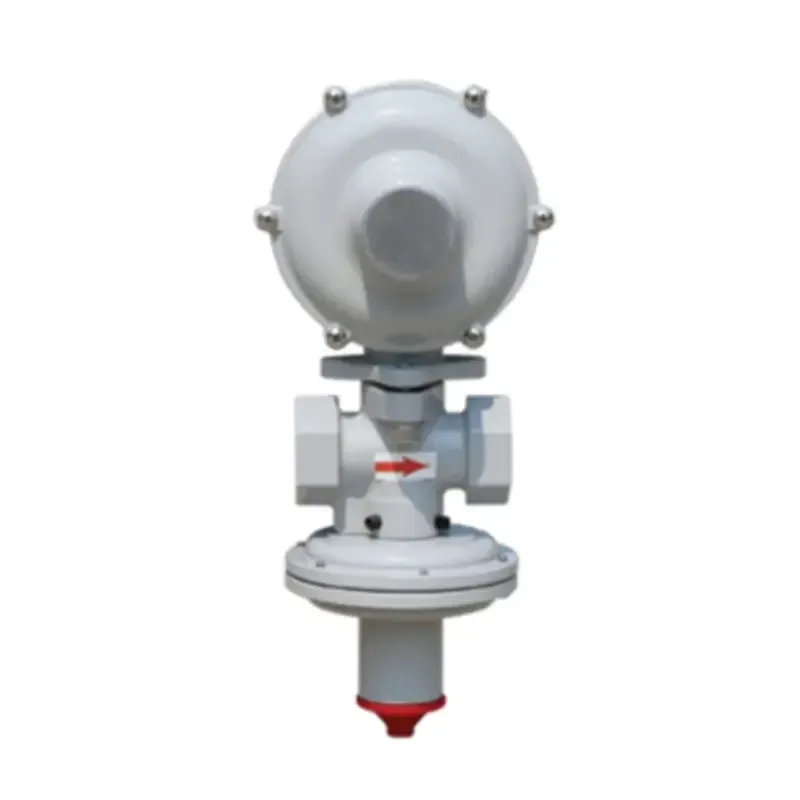
Dec . 17, 2024 08:04
Back to list
pressure reducer
Understanding Pressure Reducers Essential Components in Fluid Systems
Pressure reducers play a critical role in various industrial and residential systems, ensuring that the pressure of gas or liquid remains within safe and operational limits. These devices are essential for protecting equipment, enhancing safety, and ensuring optimal performance in fluid delivery systems. This article will explore the fundamental aspects of pressure reducers, their applications, and the factors to consider when selecting the right reducer for a specific purpose.
What is a Pressure Reducer?
A pressure reducer, often referred to as a pressure regulator, is a device that is designed to decrease the pressure of a fluid coming from a high-pressure source to a lower, more manageable level. This regulation is crucial for maintaining proper function in many applications where excessive pressure could lead to malfunctions or damage. The basic operation involves the creation of a controlled environment where the output pressure remains consistent, regardless of changes in inlet pressure or flow rate.
How Do Pressure Reducers Work?
The functionality of a pressure reducer primarily hinges on a diaphragm or piston that reacts to changes in output pressure. When the downstream pressure exceeds the set point, this component moves to restrict the flow of incoming fluid, thereby lowering the output pressure. Conversely, if the output pressure drops below the desired level, the device allows more fluid to flow through. This feedback mechanism ensures that the output pressure remains stable, providing a reliable operation for systems that depend on precise pressure levels.
Applications of Pressure Reducers
Pressure reducers are widely used in various applications, including
1. Gas Distribution Systems In natural gas and propane distribution, pressure reducers ensure that the gas supplied to homes and businesses is at a safe and usable pressure. This is crucial for appliances such as stoves, water heaters, and furnaces.
3. Water Supply Systems Water pressure reducers are employed in municipal water systems to regulate the flow and pressure of water to residential and commercial buildings, preventing pipe bursts and ensuring efficient operation.
pressure reducer

4. Industrial Processes Many manufacturing processes require specific pressure levels to function correctly. Pressure reducers are essential for keeping these processes within safe operational limits, enhancing productivity and safety.
Factors to Consider When Selecting a Pressure Reducer
Choosing the right pressure reducer involves several considerations
1. Type of Fluid The type of gas or liquid being regulated affects the design of the pressure reducer. Different materials and construction methods may be required based on compatibility and safety.
2. Pressure Range Knowing the required inlet and outlet pressure range is vital. Each pressure reducer has a specific range it can operate within, making it crucial to match these specifications with the application requirements.
3. Flow Rate The expected flow rate also influences the choice of pressure reducer. Devices are rated for different flow capacities, and selecting one that can handle the expected volume is essential for optimal performance.
4. Temperature The operating temperature can impact the performance and longevity of a pressure reducer. It is essential to choose a model that can withstand both the ambient and fluid temperatures encountered in the application.
5. Maintenance and Durability Consider the maintenance requirements and durability of the pressure reducer. Selecting a robust device that minimizes downtime and reduces maintenance needs can lead to long-term cost savings.
Conclusion
Pressure reducers are indispensable components in a wide range of fluid systems, ensuring safety, reliability, and efficiency. By understanding their operation, applications, and selection criteria, users can significantly enhance the performance of their systems while safeguarding against potential hazards associated with pressure fluctuations. Whether in natural gas distribution, hydraulic machinery, or water supply systems, the importance of choosing the right pressure reducer cannot be overstated.
Next:
Latest news
-
Safety Valve Spring-Loaded Design Overpressure ProtectionNewsJul.25,2025
-
Precision Voltage Regulator AC5 Accuracy Grade PerformanceNewsJul.25,2025
-
Natural Gas Pressure Regulating Skid Industrial Pipeline ApplicationsNewsJul.25,2025
-
Natural Gas Filter Stainless Steel Mesh Element DesignNewsJul.25,2025
-
Gas Pressure Regulator Valve Direct-Acting Spring-Loaded DesignNewsJul.25,2025
-
Decompression Equipment Multi-Stage Heat Exchange System DesignNewsJul.25,2025

